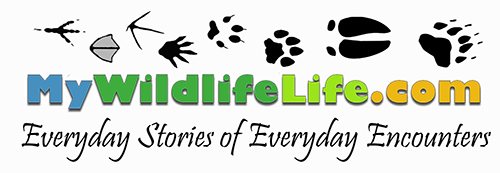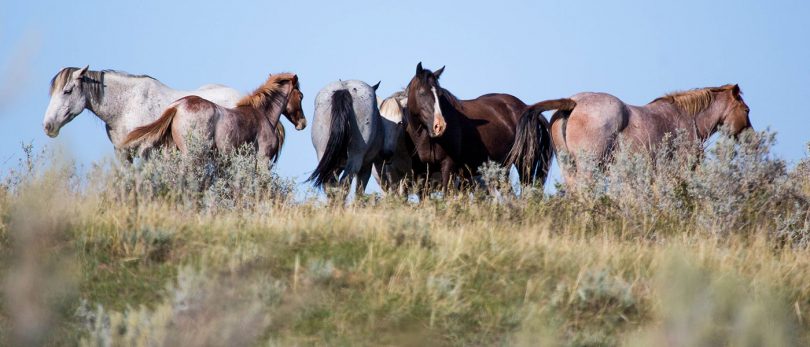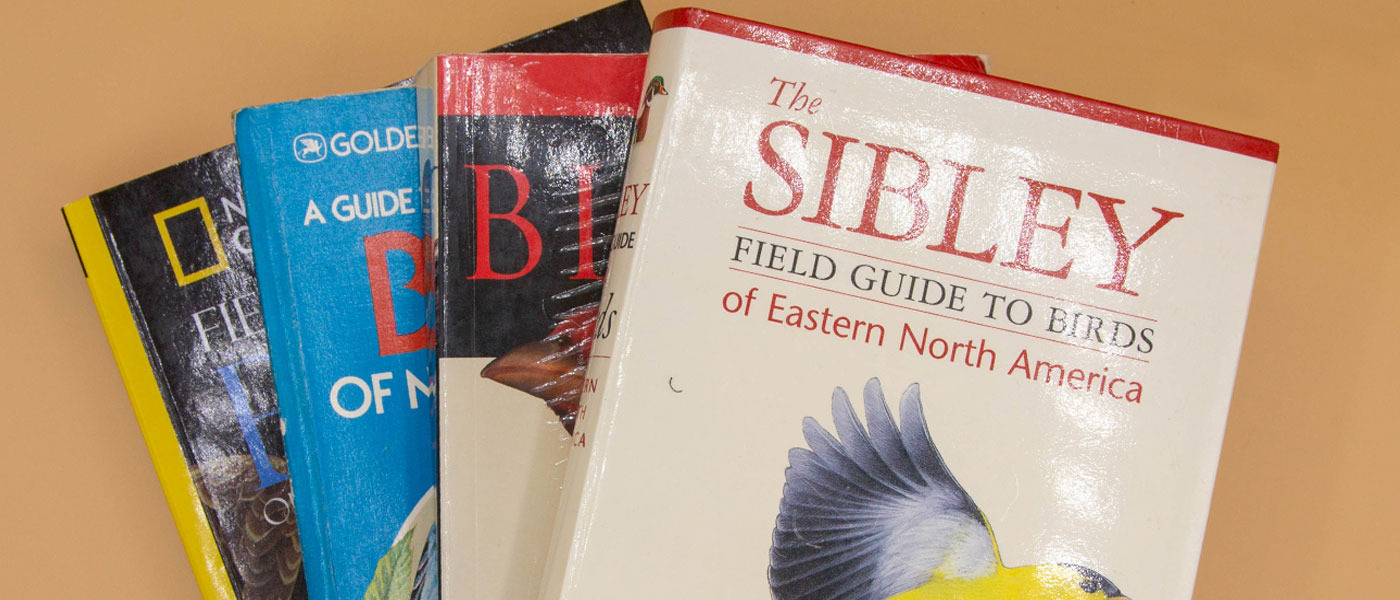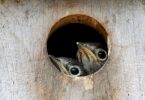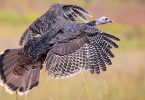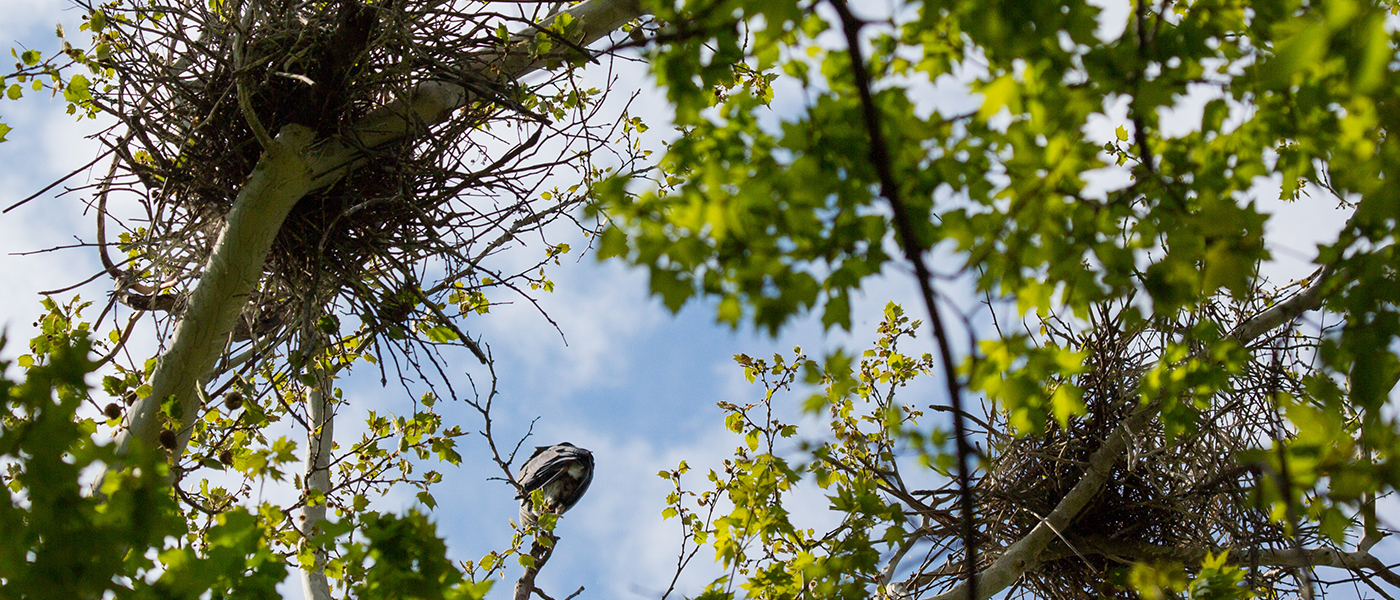If you are reading this then I can only assume that you love watching wildlife as much as me, if that is the case then this article should make you happy.
My entire life I have loved to watch any type of wildlife and growing up in the east the only big game I would see would be white-tailed deer. I remember my first trip out west and seeing elk for the first time in Colorado and the smile that moment gave me. It was then that I knew I needed to see more of the wildlife of the west.
It took several years before being able to plan a trip to Yellowstone National Park which is obviously a mecca for wildlife lovers. After researching Yellowstone, I decided to go during early to mid-June because from what I read this was the best time to see the widest range of wildlife and their young.
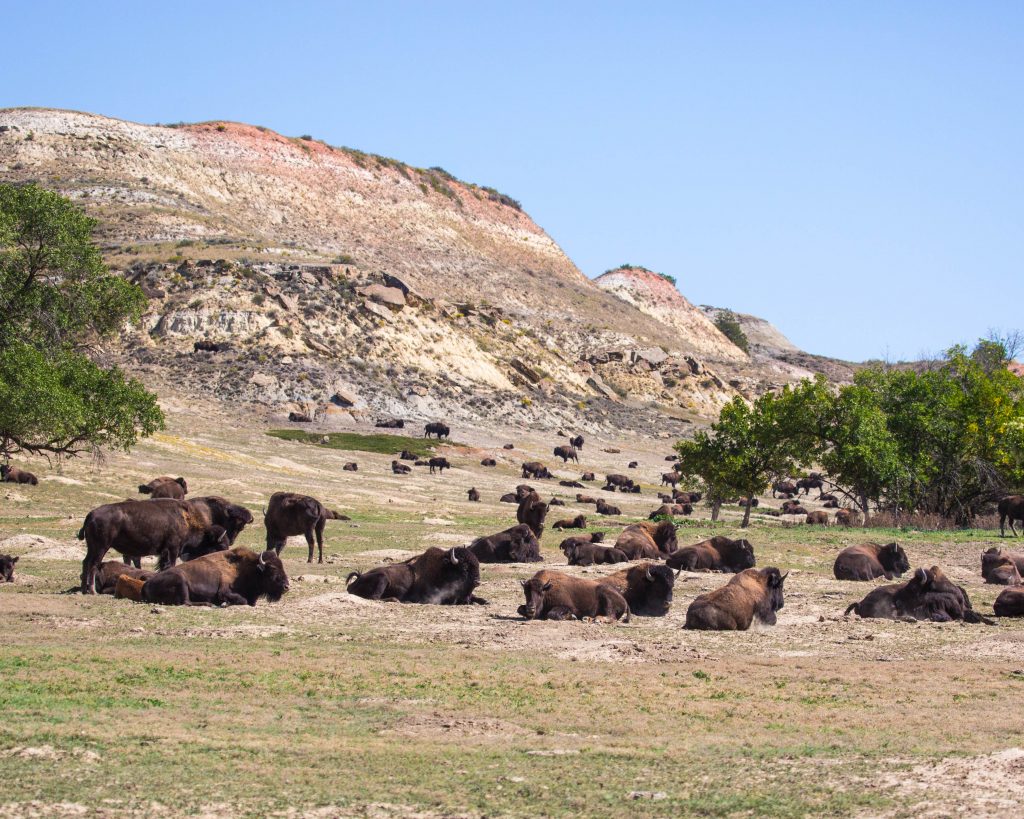
This first trip to Yellowstone did not disappoint at all, in fact, it was beyond my expectations (I’ll write about this one day so be sure to subscribe) and we had headed south through Grand Tetons National Park which was also full of wildlife. During the long hours driving back east, I was already planning my return to this great area. On the next trip, I wanted to head north and see Glacier National Park so that was the plan.
So two years later I headed back to Yellowstone in June, this time the park was still covered in a lot of snow and the lake actually still had ice on it which meant Glacier National Park was still really completely frozen. So we changed plans in order to stay in Yellowstone a few more days and then decided to drive the Beartooth Highway which we had heard about and YES you need to drive that at least once in your lifetime. This route leads us to go through North Dakota as we begin heading east.
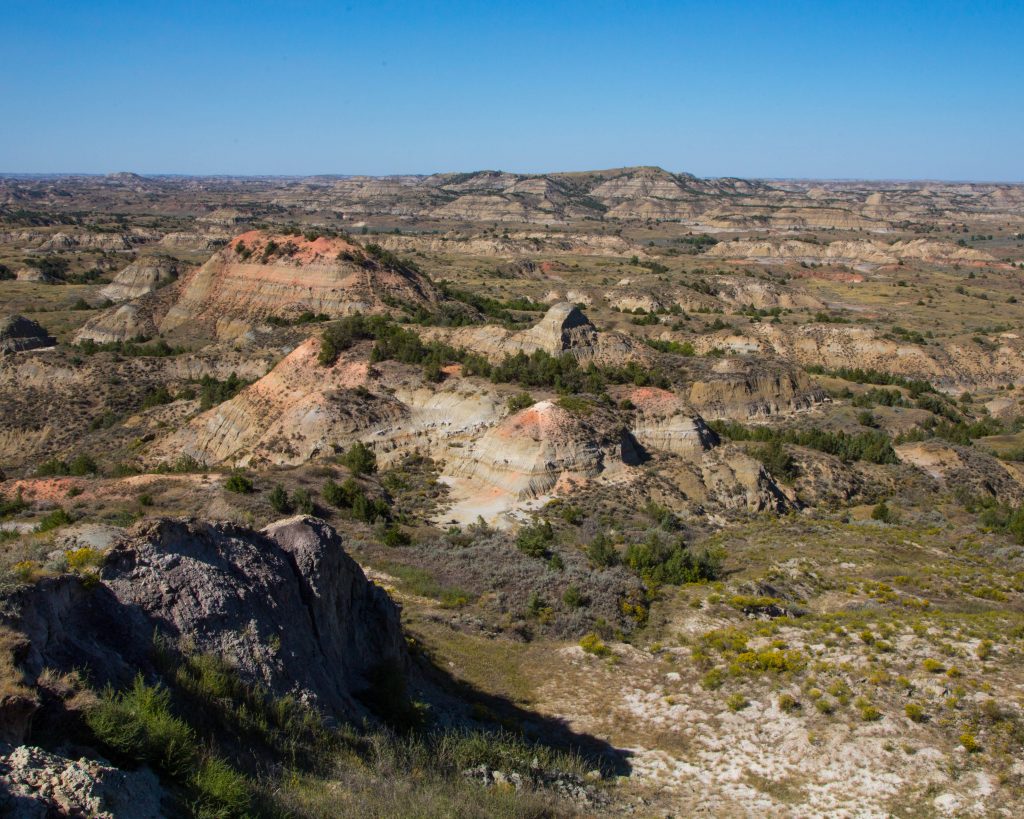
I feel this all happened for a reason as right after crossing into North Dakota from Montana I see signs for Theodore Roosevelt National Park. We had never heard of it and didn’t have a plan on stopping as we had to get back east. From the interstate, I could see a few bison and then saw horses but really didn’t know anything about the park itself. I’d be lying if I said I wasn’t disappointed at not stopping as I could have at least marked it off the National Park bucket list, but in hindsight, it’s a good thing we didn’t have time to stop as I would not have wanted to leave that day.
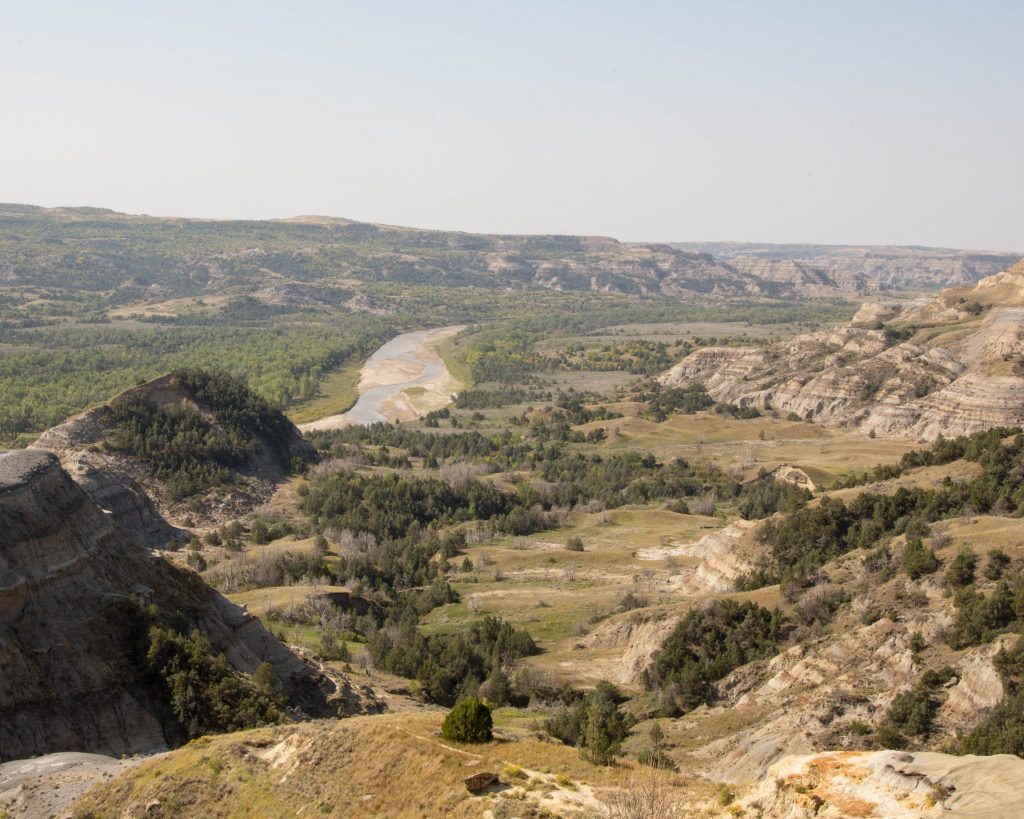
After returning home the researching of Theodore Roosevelt National Park (TRNP) began and I was happy to read about the bison, deer, horses and more so of course now I was ready to plan a trip there so that’s what happened.
After a few years, we headed west again to finally hit Glacier National Park and this time we planned for September to avoid the snow issues of June and the crowds of July and August. This trip we planned to take the northern route and stop at TRNP.
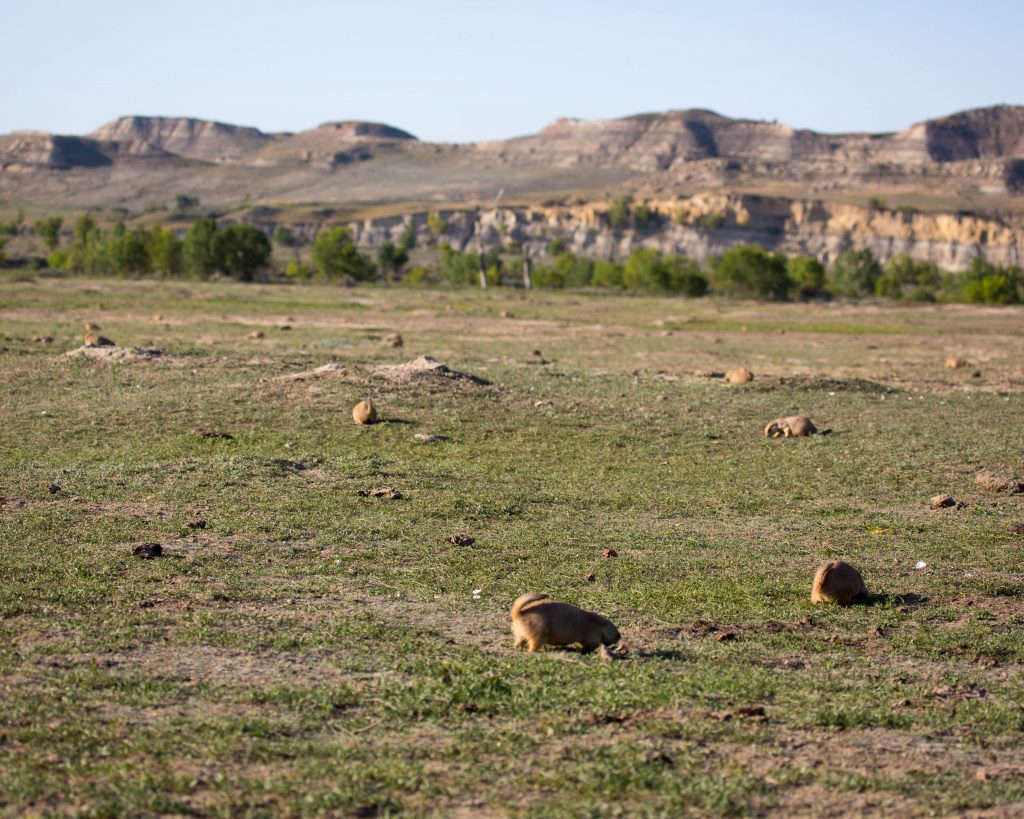
Pulling into Medora, North Dakota, the town is small, actually shockingly small. No grocery store or anything so keep this in mind if heading that way. If you need supplies, get them at one of the larger towns on the way there.
We get things settled at our campsite and head back to the visitor center along the interstate to get information to plan our visit. It’s always best to talk to the Park Rangers and employees to get their recommendations. The view from the visitor center alone is worth stopping at if you are driving through the area.
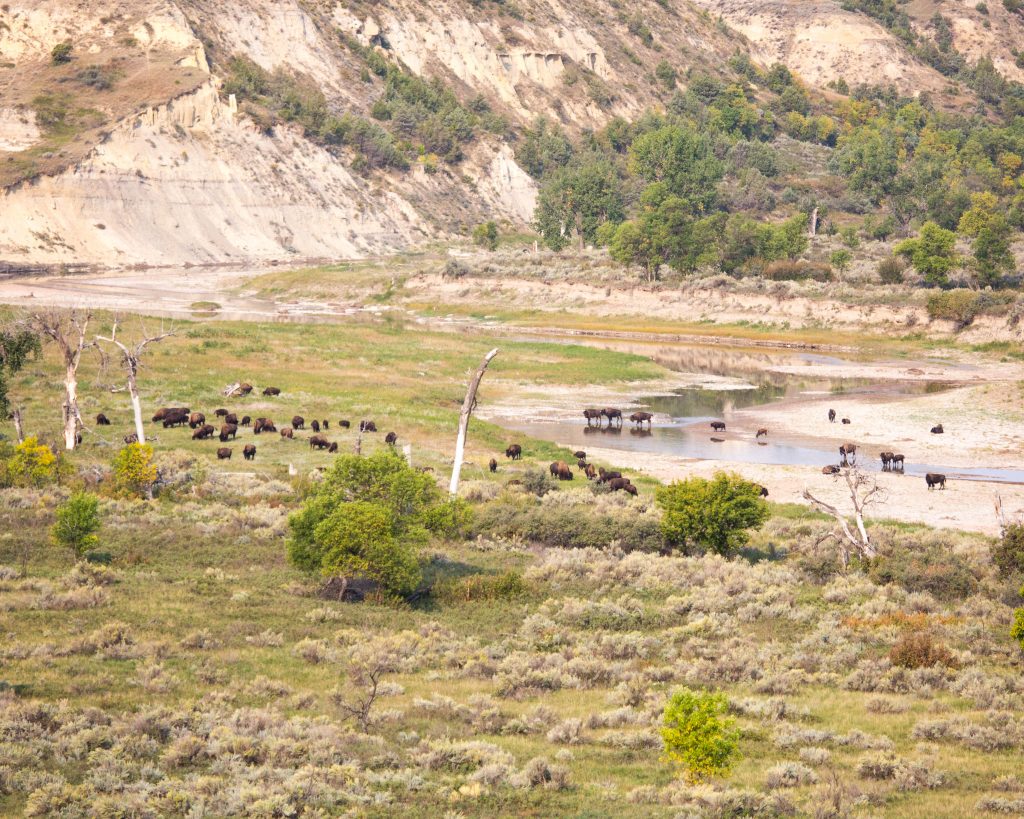
TRNP consists of three areas; the South, North, and Elkhorn Ranch units. The South Unit is considered the main area and has two visitor centers within its border. One visitor center is an exit on Interstate 94 the other is at the park entrance in Medora, there is a very small visitor center at the entrance to the North Unit. The three park units are a little ways apart.
The Elkhorn Unit is over an hour from the South Unit and is the original location of Theodore Roosevelt’s ranch. There are no longer any buildings on the property, only markers and some informational signs about the ranch during its time. I have to be honest and say we didn’t go to the ranch area as the ranger had said there was not much wildlife there as the South and North Units are fenced and keep the wildlife within their borders. They say the road to the ranch is not paved and is subject to washouts so you might want to check with the visitor center staff before heading out to that unit.
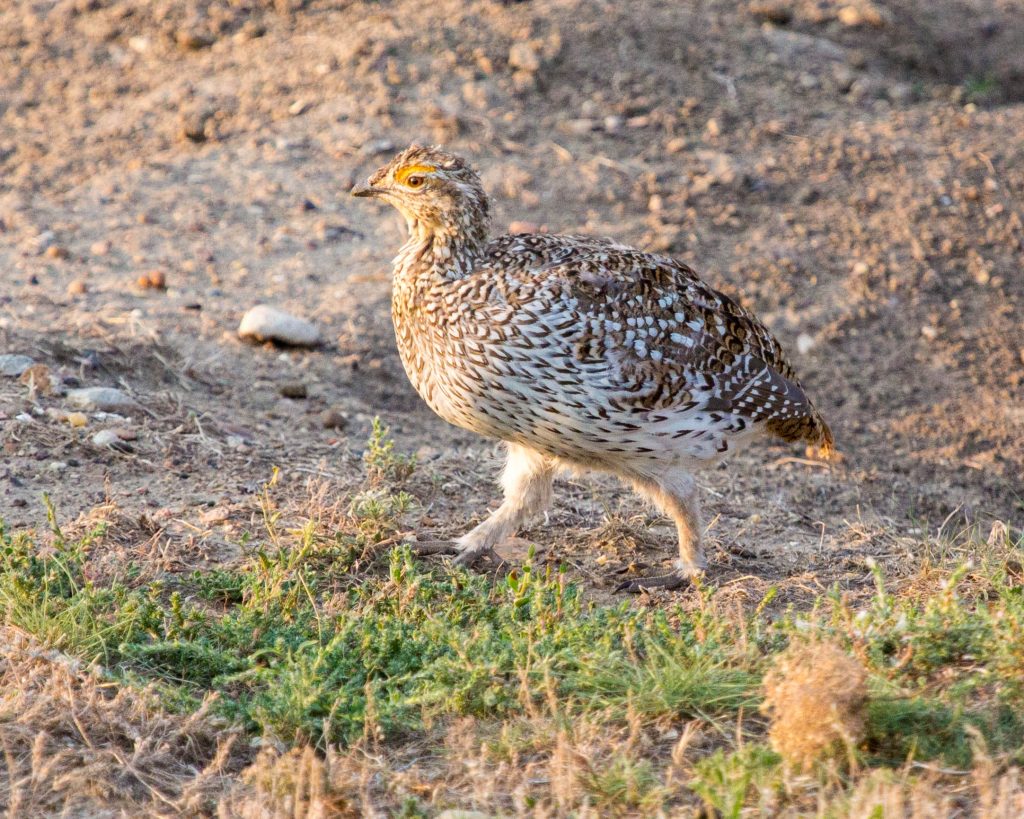
To explain the landscape of TRNP is best to compare to Badlands National Park in South Dakota. It’s basically the Badlands but way more vegetation. The colors in the soil are amazing as different hills can be different colors. The vegetation adds to the beauty of this place and one big difference from the South Dakota Badlands is that this park has the Little Missouri River running through both the North and South units adding to the majestic landscapes.
At the entrance to the South Unit, be sure to stop at the visitor center and see a small museum of Theodore Roosevelt’s items. Also, go out back to see the original historic cabin that has been moved there and restored.
The South Unit features a 36-mile loop road that makes navigating the park really easy, just drive till you hit the intersection and pick left or right. There are several overlooks and I recommend that you stop at them all as the landscape colors change due to the soil differences.
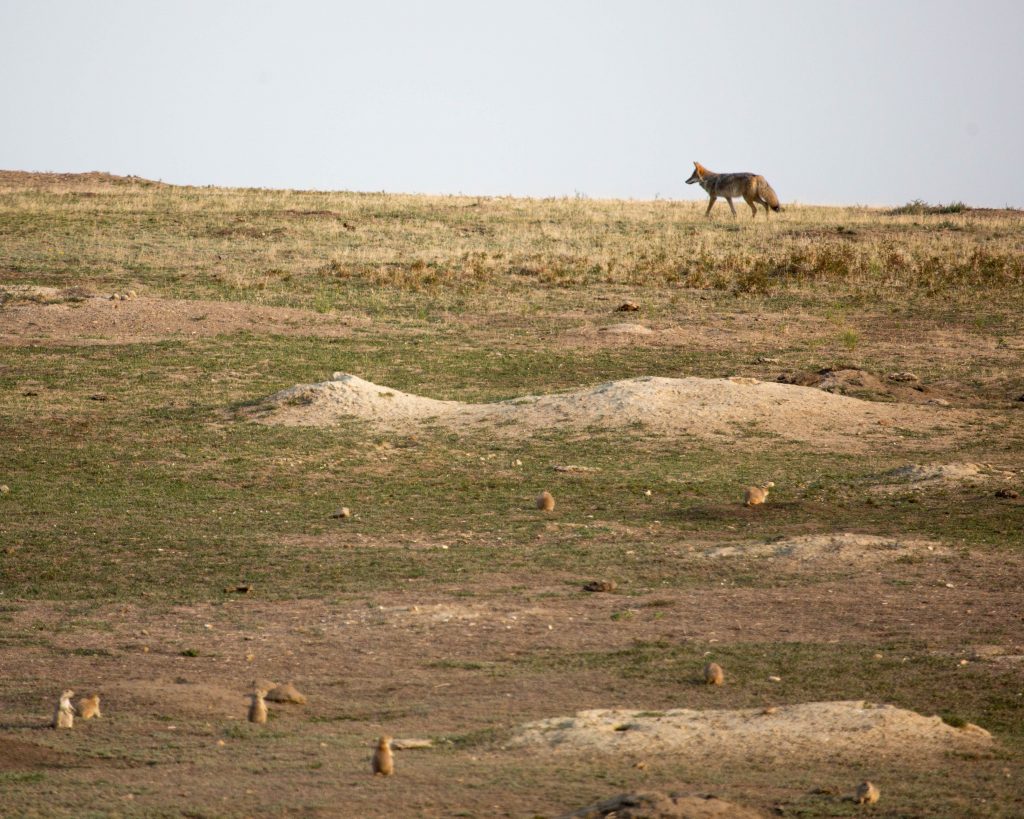
Along the entrance road from the visitor center and throughout the loop road area, you will see several prairie dog towns. I highly recommend that you stop and hang out for a while and not only watch the prairie dogs but look along the horizon and back in the fields for predators. Almost every time we would stop and really look, we would see coyotes or hawks stalking the town residents.
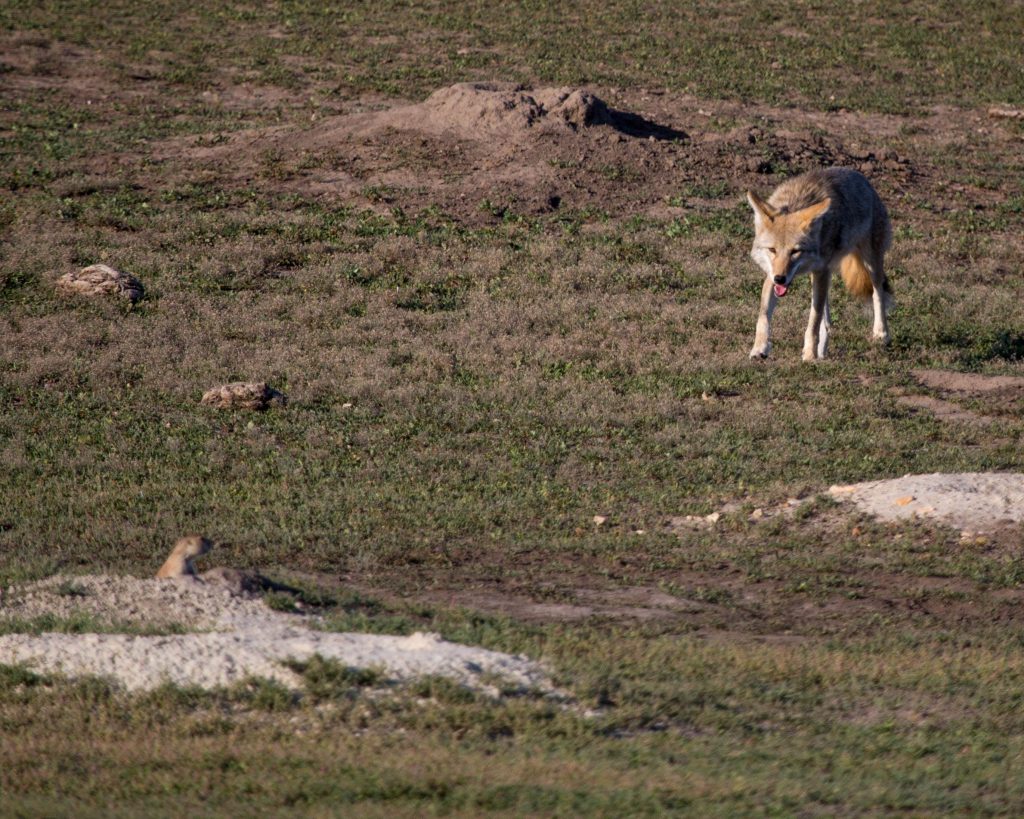
Besides the numerous prairie dog towns, you will find herds of bison but while the herds are beautiful to see be sure to be looking for the lone bull bison which can be anywhere within the hills. The bulls are massive and really what you think of when you think about the western bison.
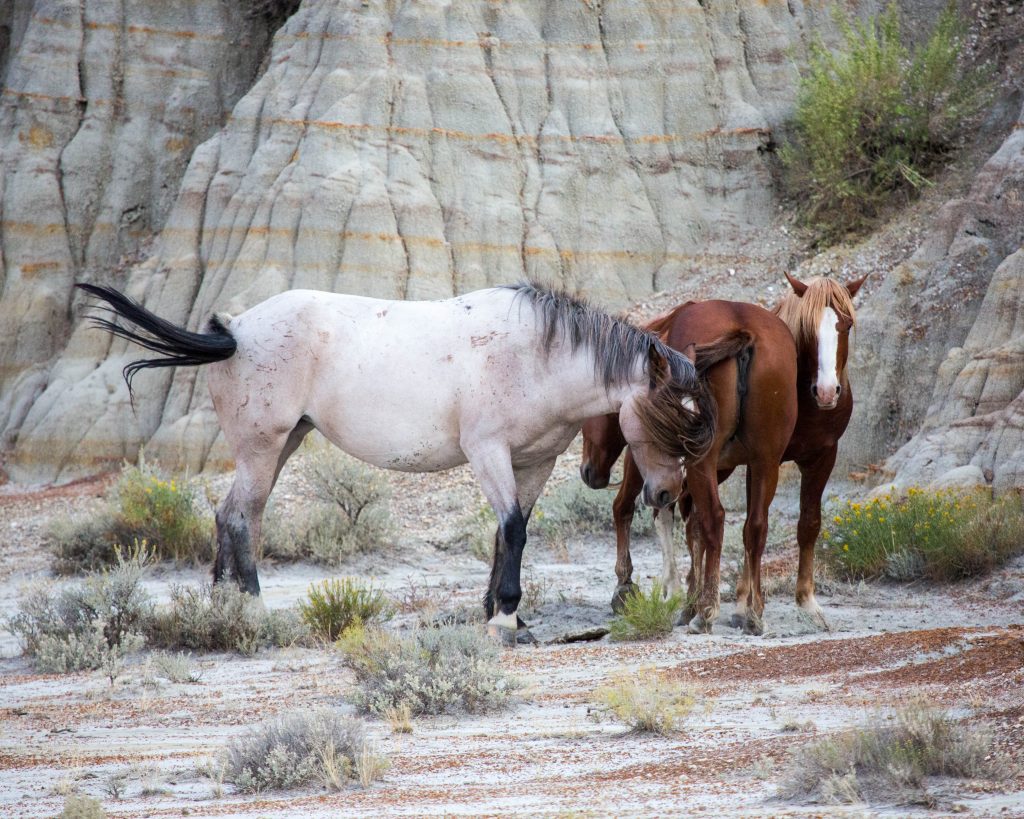
One thing that TRNP is famous for is its wild horses and they don’t disappoint. For whatever reason, the colors of these wild horses seem to be more unique from domestic or other wild herds I’ve seen. There are beautiful gray horses with red blended in along with other colors but that one combination really stood out to me especially in that landscape.
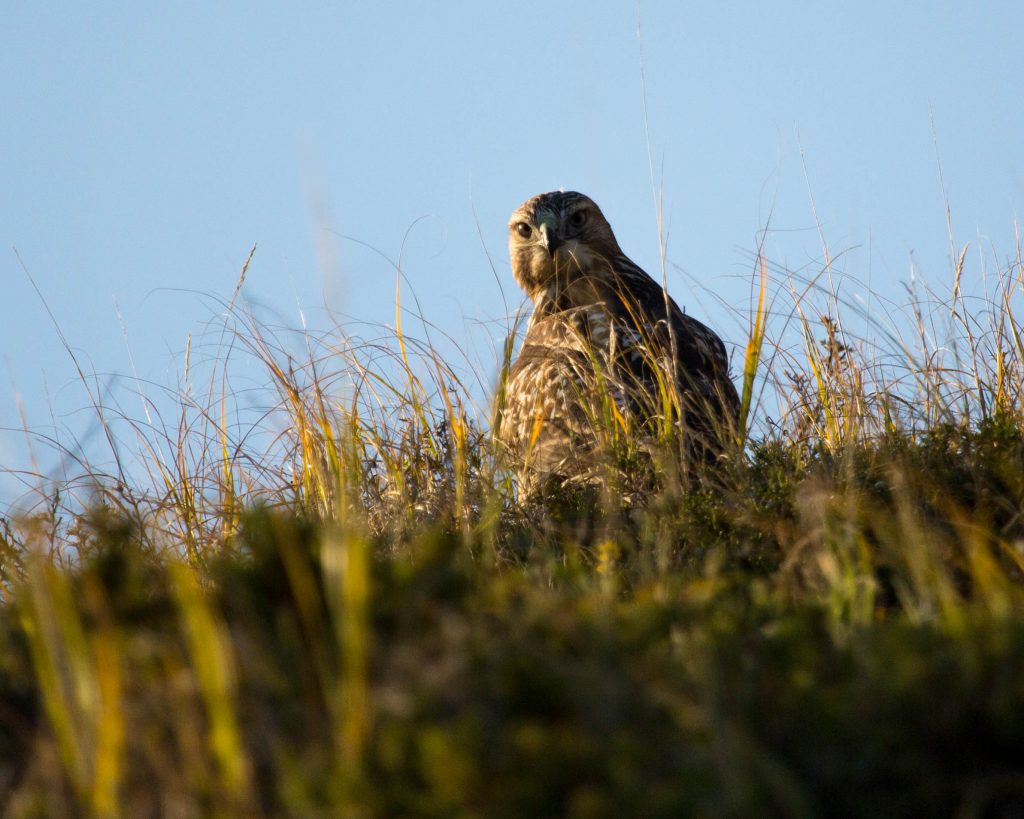
TRNP South Unit also has a herd of elk within its borders but they usually cannot be spotted from the road and require hiking back into the Wilderness Area on the other side of the river. During our time here we did not see any elk from the road and pullouts even with checking where the Rangers said was best to see them with binoculars. We were not equipped for long hikes and the weather when we were there was extremely hot and there was a lot of smoke in the air from western wildfires. So we were not able to mark elk off our list but hey that just creates a reason to return.
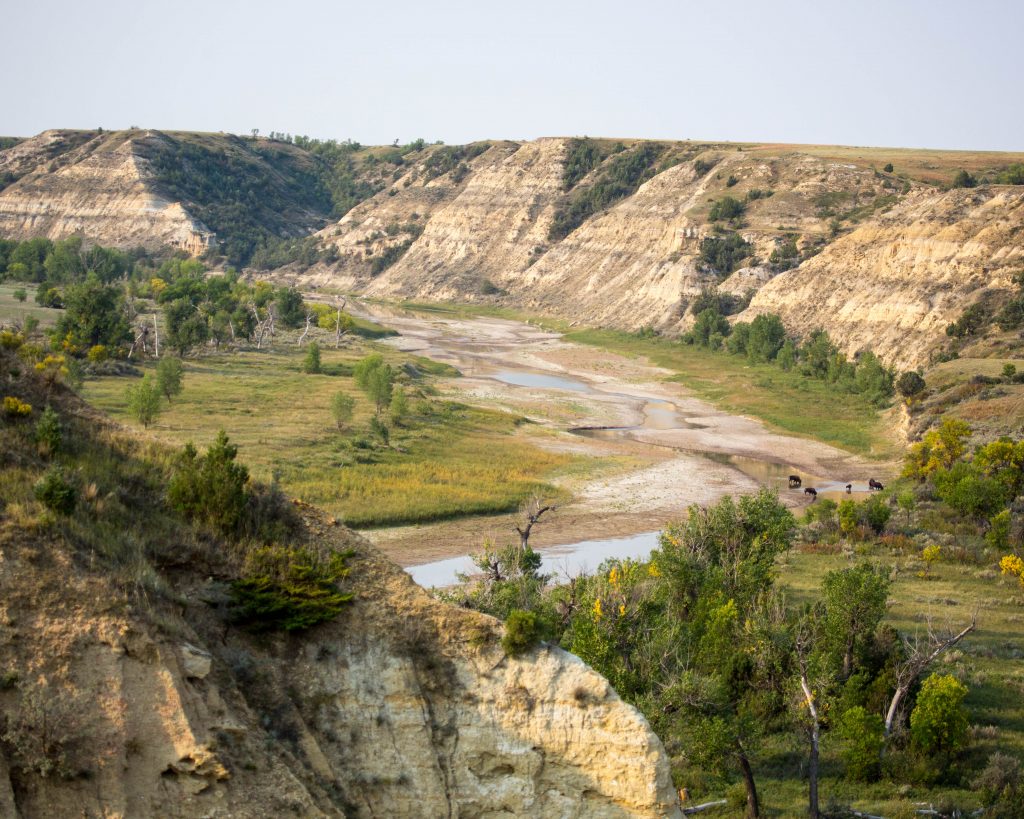
For an easy hike, I highly recommend the Wind Canyon Trail. It’s a short loop trail that features an amazing overlook of the Little Missouri River valley in the South Unit. The day we went there happened to be two separate bison herds in the valley making for a spectacular view.
A little bit about the North Unit, it’s a little over 60 miles from the South Unit to the entrance on the North Unit. The drive between the units has amazing scenery of its own so plan to take your time. There is not a lot of anything around there so recommend that you pack a lunch and snacks if you are planning on just driving through. We enjoyed a nice picnic in the campground/picnic area which has a restroom area before heading back to Medora.
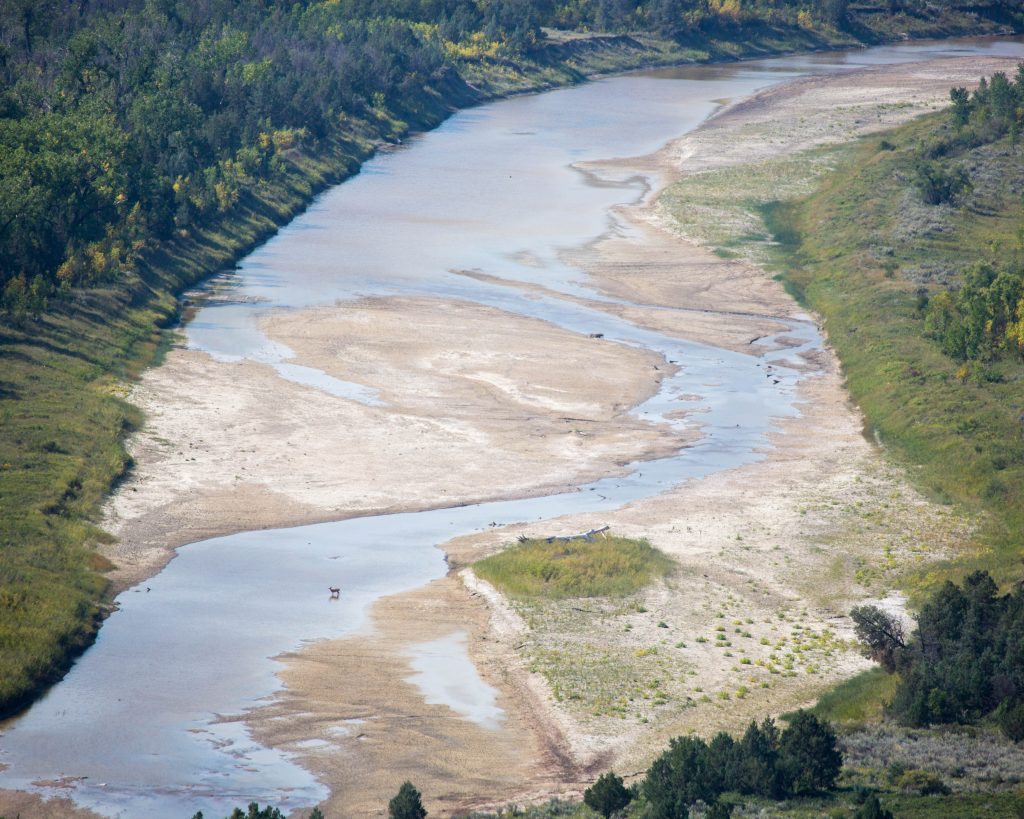
The North Unit is different in that its landscape seems to not feature as many colors but has more high cliff type elements. If you do nothing else in the North Unit you must stop at the River Bend Overlook and walk out to the overlook stone shelter built there in the 1930s. The view of the Little Missouri River valley from here is literally breathtaking. It’s one of those places where you have to just stand and take it in. Recommend taking some binoculars and scanning the valley floor from above. We spotted deer in the river and bison in several places in the valley.
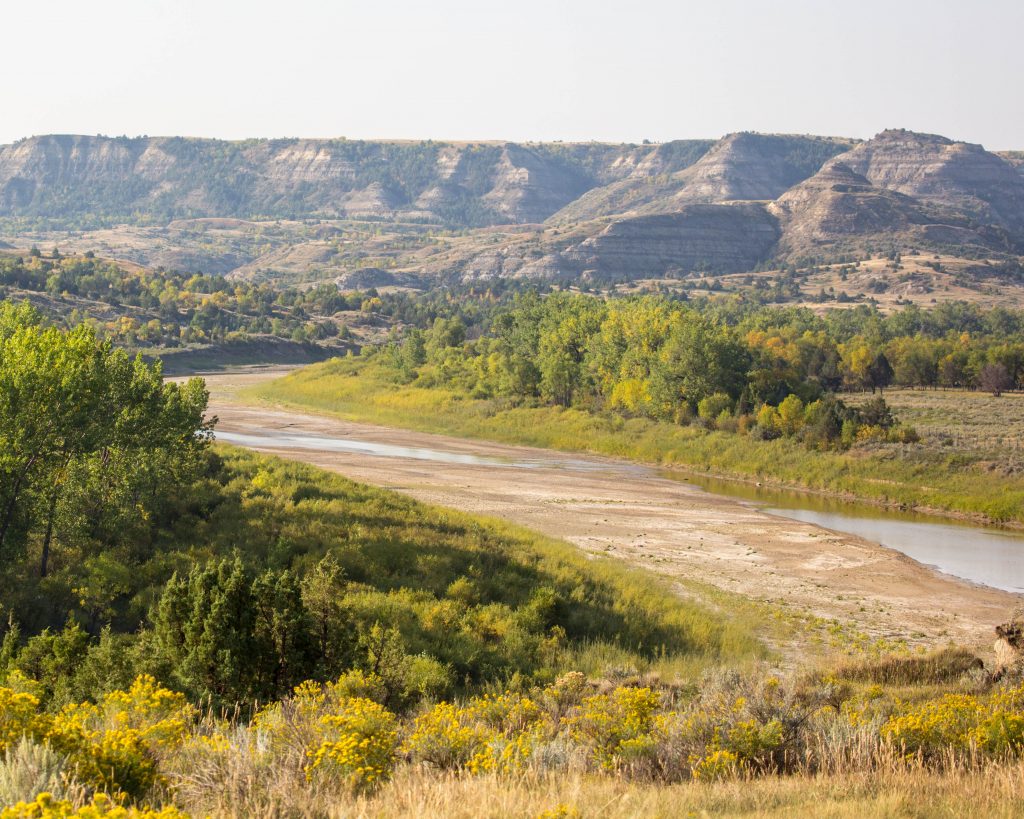
The Oxbow Overlook is another one that is worth the time to check out. It’s at the very end of the 14-mile scenic drive and you simply walk up over the edge from the parking lot and you are overlooking the river valley.
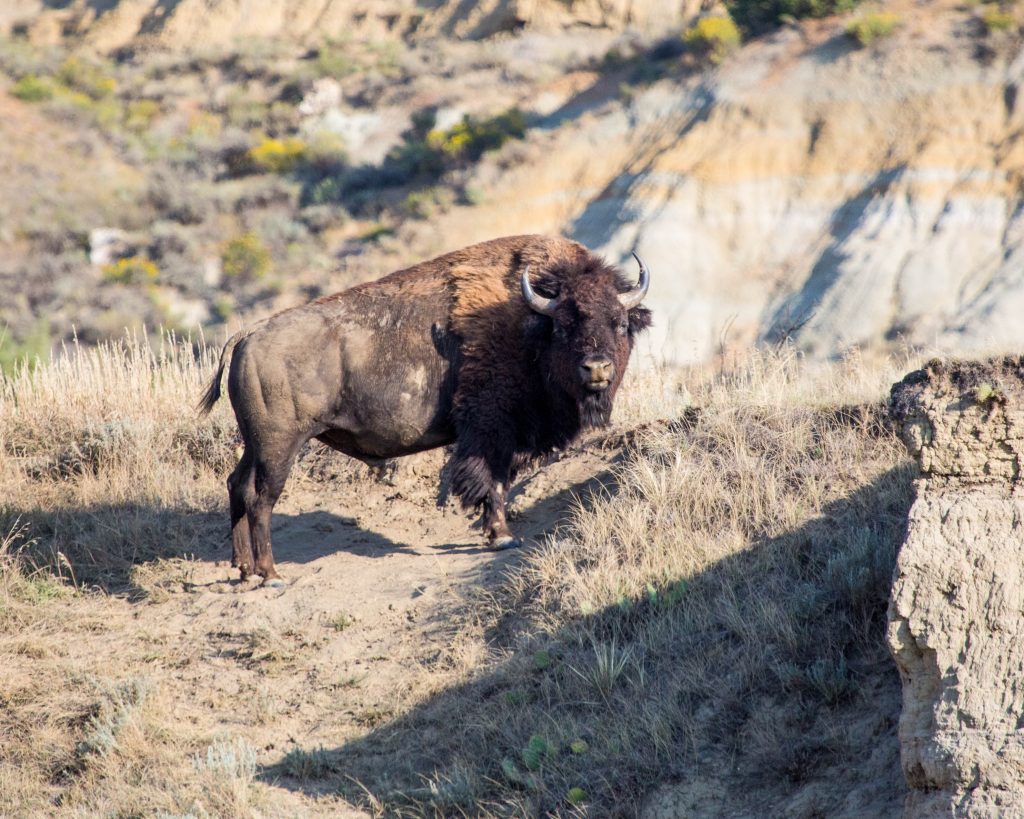
Be sure to look for wildlife along the way. The wildlife here is similar in that they have bison as well. To me, the bison in this area seemed bigger than anywhere else in the country that I have ever seen bison. The bison bulls were so majestic in the hills. No elk in this area but they said there are Bighorn Sheep but rare to see, we were not lucky enough to spot them. Also, don’t be alarmed if you see longhorn steer cattle here as they are part of the park protected historic wildlife.
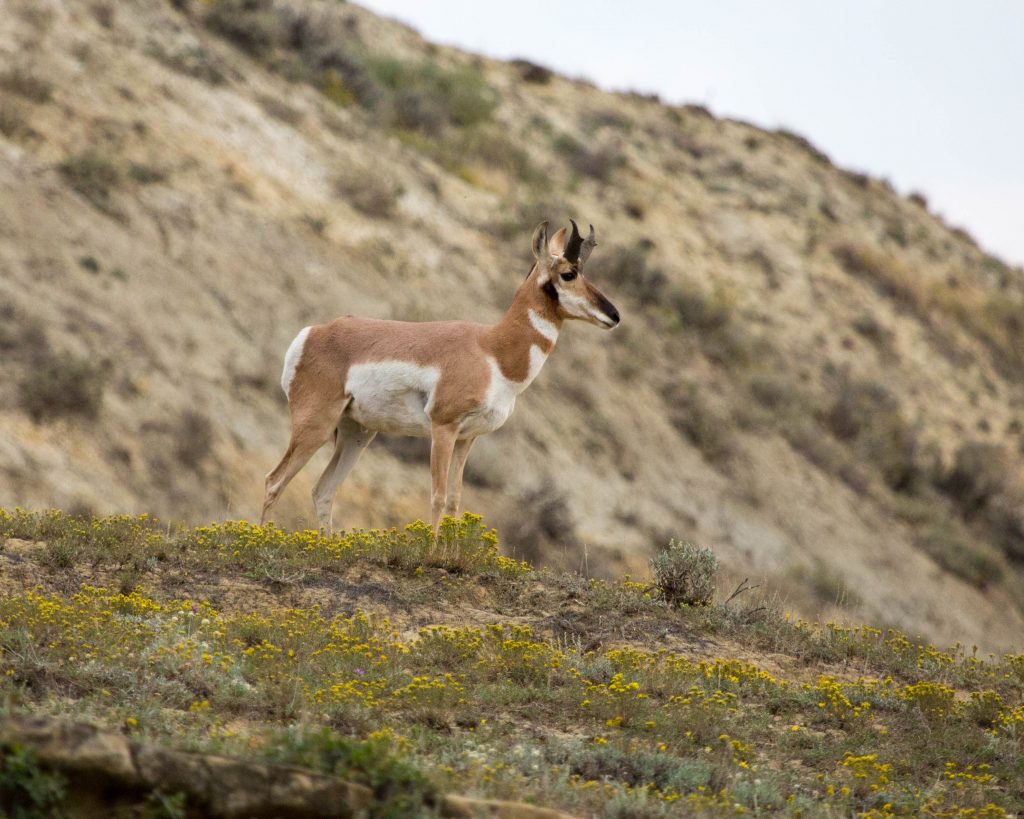
Throughout both units, we also saw lots of mule deer, along with pronghorn, coyotes, sharp-tailed grouse, wild turkey, a ring-necked pheasant, and even a porcupine. It was a joy to simply drive the loop road and see what we could find and this place did not disappoint. We visited in September so I can’t imagine what the wildlife is like in the spring as my feeling is everything is better in the spring.
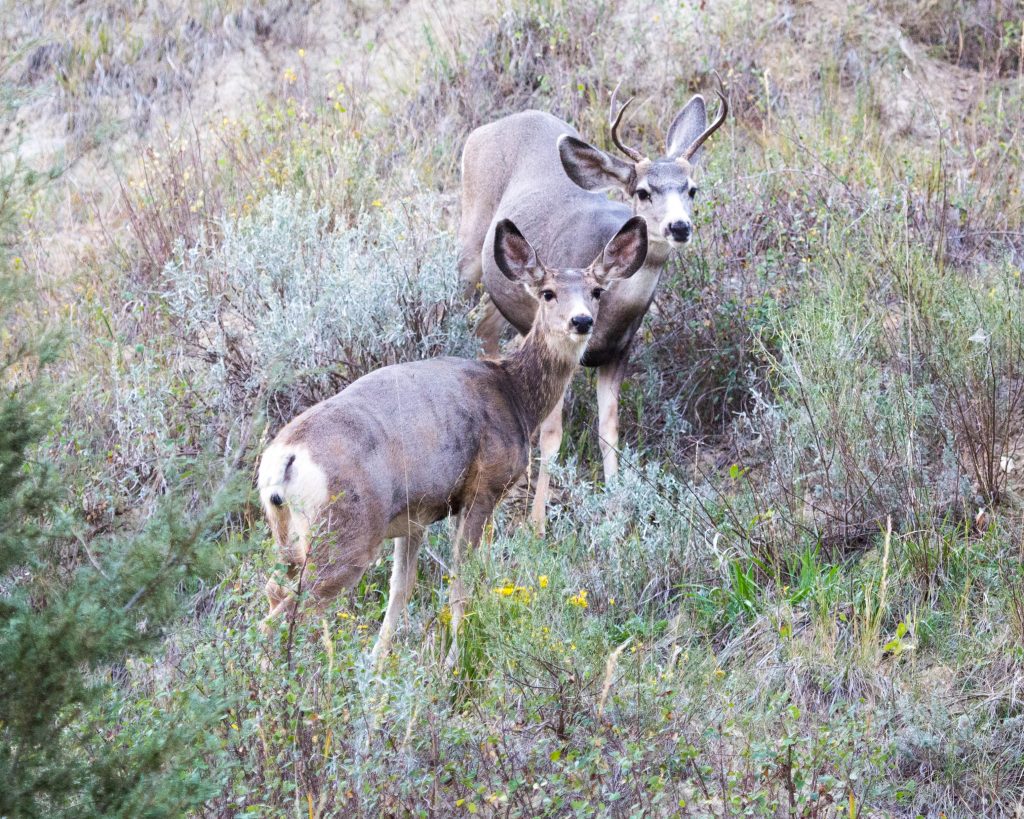
To sum up I can’t recommend Theodore Roosevelt National Park enough. The landscape scenery is unlike anything else and the wildlife mixed it just makes it a very nice place for any wildlife lover. The area is small so you might want to check about reservations if going in peak season.
I hope you found this useful and that you go and enjoy the wonders of TRNP. If you do be sure to come back and leave comments of what you thought about the park and more importantly the wildlife.
Oh and by the way, I still never made it to Glacier National Park as the wildfires that year were the worst and the park closed before we made into Montana but we got to spend more days looking for wildlife in TRNP which was fine by me.
